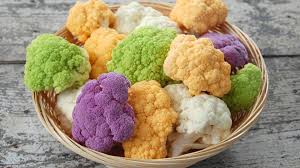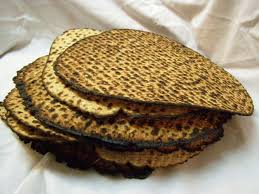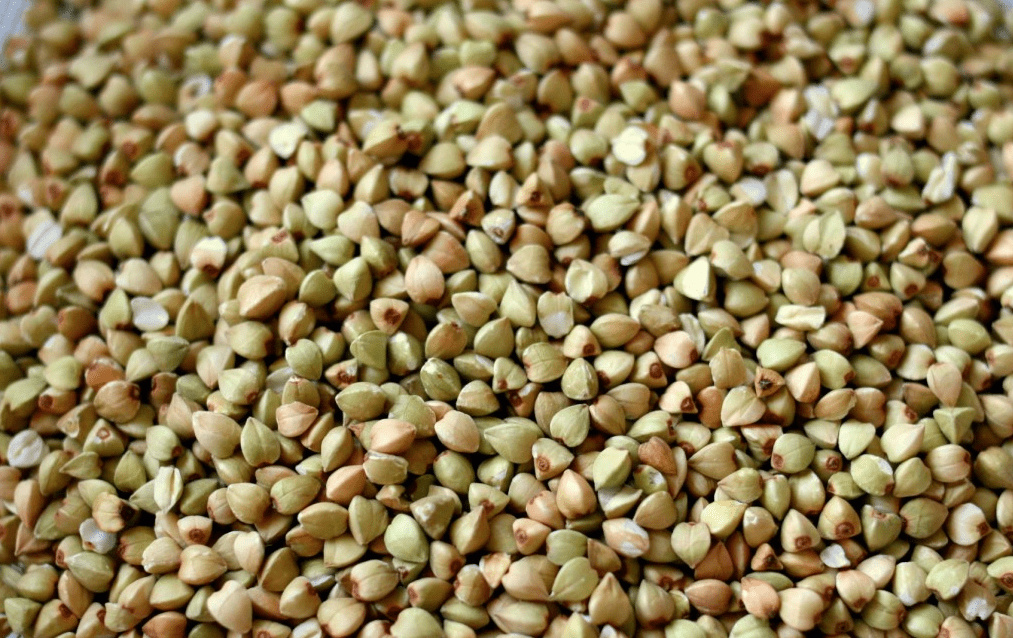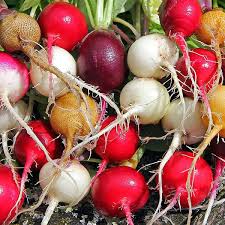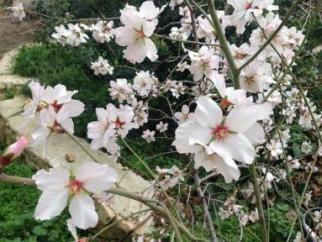There are organic vegetables that make me wonder. The cauliflower, for example. I look at it and am amazed – a vegetable so simple, so hidden (under the leaves) and yet there is something fascinating about it.
Most of us are familiar with the pure white cauliflower, typically hidden under its leaves from the sunlight, which makes them green. Yes, just like that – the pigment found in cauliflower causes its blossom to be sensitive to sunlight, and when it is exposed it produces chlorophyll and turns green.
People who want to protect their skin from the sun's rays wear a wide-brimmed hat, sit in the shade or apply sunscreen, while the cauliflower, having less means, snugs behind its cabbage leaves hiding from the glare. Sometimes it is assisted by the farmer who covers it with the outer leaves if it is not covered properly. Besides the white cauliflower, there are also very colorful cauliflowers – green (which look like they were pulled straight out of an alien movie or from a psychedelic fractals picture), orange and also purple.
This protective cover discloses the family relations it has to with the cabbage. Both come from the same source, and even the name in English, Cauliflower, is derived from the Latin words caulis (cabbage) and flōs (flower) – cabbage flower.
The cauliflower is indeed the blossom – a mass of tiny white flower buds we pick and bring to our table before they reach the next stage in their growth cycle – turning into flowers.
The cauliflower, like the broccoli, is a plant we grow for its flower buds… Farmers worked hard for many years to develop the cauliflower – collecting seeds only from the blossoms whose blossoms looked and tasted the best, and sowing them for the next year, of which only the best were collected and sowed again. As opposed to more modern methods of creating new species, some of which include creating mutations by radiation.
If we explore the genealogy of cauliflower, apart from the cabbage, it shares a family with the broccoli, kale and even the kohlrabi, all of which were patiently developed from the garden cabbage, Brassica oleracea, their botanical father who looks somewhat like kale.
The Germans may have assumed that cabbage and turnip together form a kohlrabi (in German Kohl = cabbage plus Rübe ~ Rabi = turnip), but we know that the turnip is irrelevant: it belongs to the Brassica Rapa species, which also includes the Bok Choy and the Chinese cabbage. In other words, the turnip is indirectly related, like a second cousin, since both it and the cabbage and cauliflower belong to the extended family – the Cruciferae, which also includes the radish, the Roquette and the mustard.
As such, it contains quite a few substances that our body will be happy to receive: Sulforaphane, which, apart from strengthening immune system functions related to its ability to fight cancer cells, it is also an antioxidant; Indole, a compound that affects the estrogen hormone in the body, thus reducing the chances of breast cancer. Although it is not orange, yellow, green or red like other organic fruits and vegetables that we recognize as a good source of vitamin C, cauliflower has plenty of it, along with other beneficial phytochemicals and nutritional fiber.
I try to imagine what those farmers were thinking, what made them keep up the cauliflower development task from one year to the next – were they so sick and tired of the cabbage there, in Europe? (I suppose that during the cold season in Europe, which has much more impressive levels of cold and snow than the comfortable Mediterranean climate we know, the Europeans probably did not have much of a variety of organic vegetables, and certainly no organic fruit to choose from). What they managed to grow in summer and pickle or preserve – that's what they'll eat in winter. I suppose sometimes the variety was so narrow, perhaps some dried meat, potatoes, and cabbage. Lots of cabbage. And how much sauerkraut, borscht and maybe cabbage dumplings can be eaten before another vegetable is developed?
The cauliflower was probably brought the Romans, somewhere between Marcus Kensorius and old Flenius. In later periods there are cauliflower references in Syria, Spain and Italy. As in any sweeping fashion and trend that spreads from the celebrity table downwards, it found its way to the table of Louis XIV of France and then to the northwest French culinary.
Ever since it is cooked, baked and also – eaten raw in a multitude of dishes and foods, as long as it is fresh and crispy. Enjoy your cauliflower…
To health!
Yours,
The garden team
We can expect to receive in our organic vegetable baskets (draft only):
Cucumbers
Lettuce
Tomatoes
Cucumbers
Potatoes
Beets with leaves
Parsley
Spinach
Celery
Peppers
Onions
In the LARGE vegetable baskets also:
Sweet potatoes
Cilantro
Swiss chard
In the organic fruit baskets:
Bananas
Oranges
Clementine
In the LARGE fruit baskets also:
Sweetie
Red grapefruit

